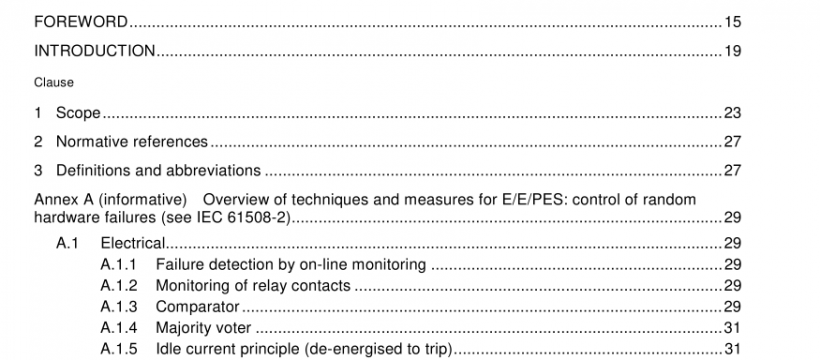IEC 61508-7:2000 pdf free download
IEC 61508-7:2000 pdf free download.Functional safety of electrical/electronic/ programmable electronic safety-related systems
B.6.6.2 Cause consequence diagrams
NOTE This technique/measure is referenced in tables A.1 0, B.3 and B.4 of IEC 61 508-3.
Aim: To model, in a diagrammatic form, the sequence of events that can develop in a system as a consequence of combinations of basic events.
Description: The technique can be regarded as a combination of fault tree and event tree analysis. Starting from a critical event, a cause consequence graph is traced backwards and forwards. In the backward direction it is equivalent to a fault tree with the critical event as the given top event. In the forward direction the possible consequences arising from an event are determined. The graph can contain vertex symbols which describe the conditions for propagation along different branches from the vertex. Time delays can also be included. These conditions can also be described with fault trees. The lines of propagation can be combined with logical symbols, to make the diagram more compact. A set of standard symbols is defined for use in cause consequence diagrams. The diagrams can be used to compute the probability of occurrence of certain critical consequences.
Reference: The Cause Consequence Diagram Method as a Basis for Quantitative Accident Analysis. B. S. Nielsen, Riso-M-1 374, 1 971.
B.6.6.3 Event tree analysis
NOTE This technique/measure is referenced in table B.4 of IEC 61 508-3.
Aim: To model, in a diagrammatic form, the sequence of events that can develop in a system after an initiating event, and thereby indicate how serious consequences can occur.
Description: On the top of the diagram is written the sequence conditions that are relevant in the progression of events that follow the initiating event. Starting under the initiating event, which is the target of the analysis, a line is drawn to the first condition in the sequence. There the diagram branches off into “yes” and “no” branches, describing how future events depend on the condition. For each of these branches, one continues to the next condition in a similar way. Not all conditions are, however, relevant for all branches. One continues to the end of the sequence, and each branch of the tree constructed in this way represents a possible consequence. The event tree can be used to compute the probability of the various consequences, based on the probability and number of conditions in the sequence.
IEC 61508-7:2000 pdf free download
